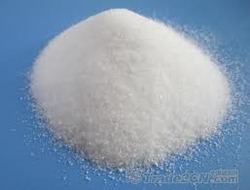Formula LiI Molar mass 133.85 g/mol Density 4.08 g/cm³ | Melting point 469 °C Boiling point 1,171 °C Appearance White crystalline solid | |
 | ||
Lithium iodide, or LiI, is a compound of lithium and iodine. When exposed to air, it becomes yellow in color, due to the oxidation of iodide to iodine. It crystallizes in the NaCl motif. It can participate in various hydrates.
Applications
Lithium iodide is used as an electrolyte for high temperature batteries. It is also used for long life batteries as required, for example, by artificial pacemakers. The solid is used as a phosphor for neutron detection. It is also used, in a complex with Iodine, in the electrolyte of dye-sensitized solar cells.
In organic synthesis, LiI is useful for cleaving C-O bonds. For example, it can be used to convert methyl esters to carboxylic acids:
RCO2CH3 + LiI → RCO2Li + CH3ISimilar reactions apply to epoxides and aziridines.
Lithium iodide was used as a radio contrast agent for X-ray computed tomography imaging studies. Its use was discontinued due to renal toxicity, replaced by organic iodine molecules. Inorganic iodine solutions suffered from hyperosmolarity and high viscosities.
